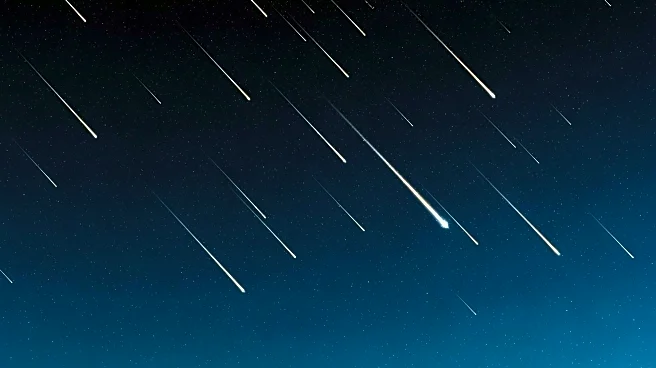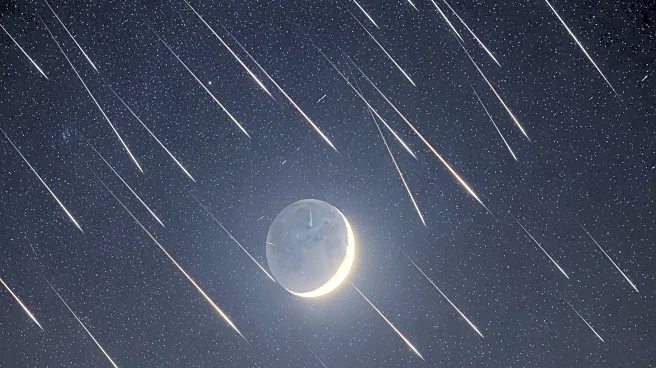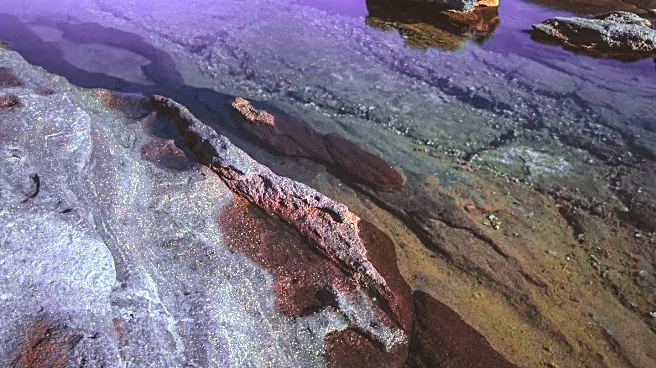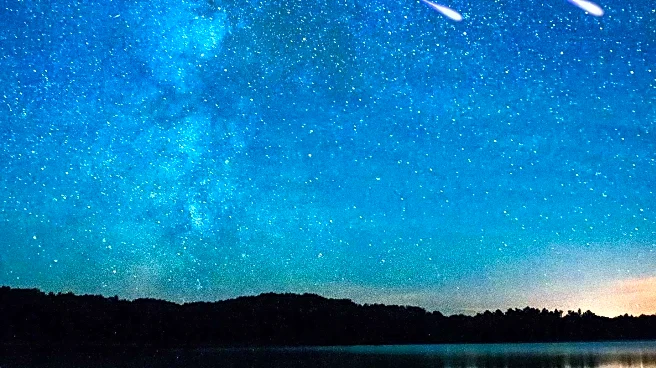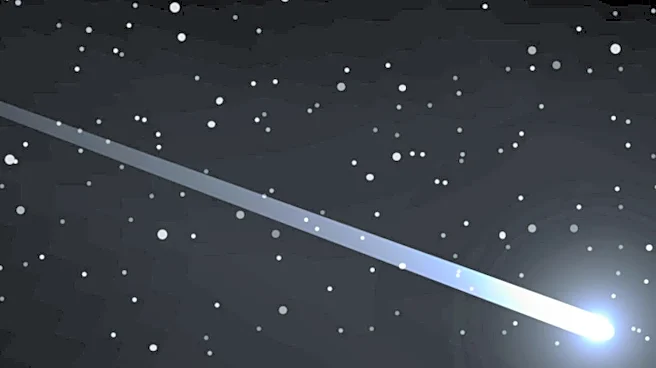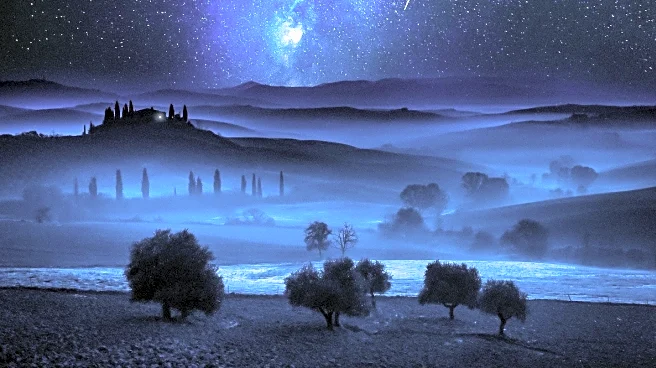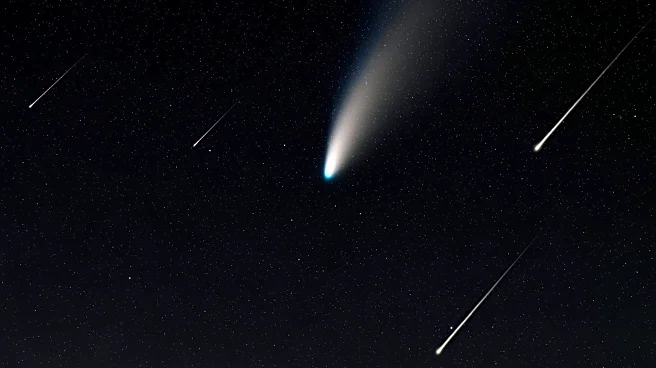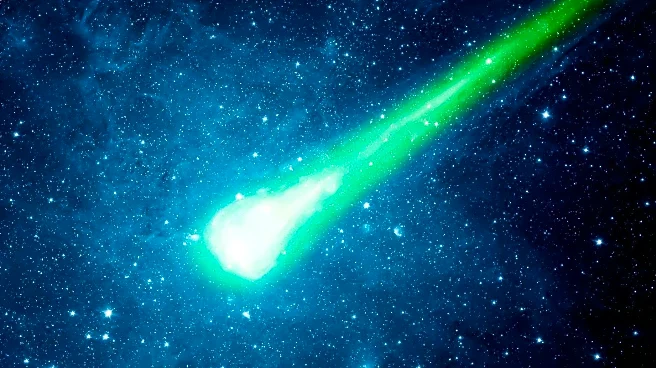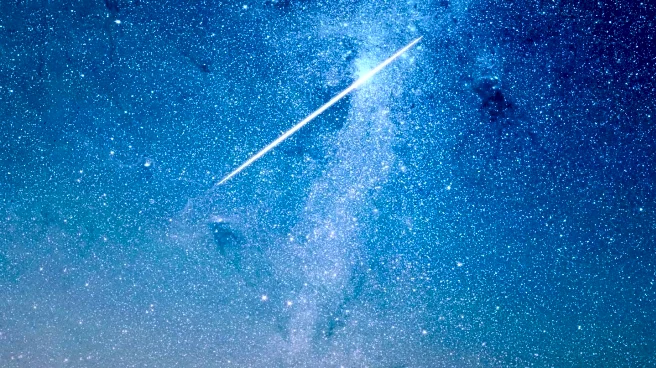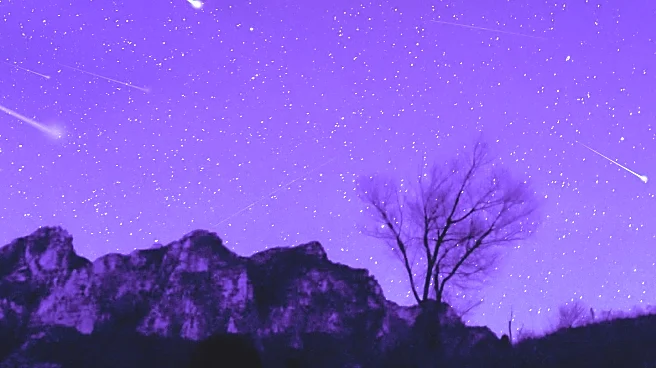What's Happening?
The Orionid meteor shower, peaking from October 21-23, 2025, provided a stunning display as debris from Halley's Comet entered Earth's atmosphere. Photographer Osama Fathi captured the event over Lake
Qarun in Egypt, showcasing meteors streaking across the sky. The shower coincided with a new moon phase, offering optimal dark sky conditions for viewing. Despite potential cloud cover, the American Meteor Society predicts continued visibility of meteors in the following days, with rates exceeding 10 per hour in rural areas.
Why It's Important?
Meteor showers like the Orionids offer a natural spectacle that can engage the public in astronomy and science. The event highlights the ongoing influence of Halley's Comet, a celestial body with historical significance. The shower's visibility during a new moon phase enhances the experience, allowing even faint meteors to be seen. This event may encourage interest in astrophotography and the study of meteor showers, contributing to educational and scientific pursuits.
What's Next?
The Orionid meteor shower will continue to be visible in the coming days, with the radiant moving into the constellation Gemini. Observers are advised to seek dark skies away from urban light pollution for the best viewing experience. The American Meteor Society will provide updates on meteor activity, guiding enthusiasts on optimal viewing times. As the shower progresses, photographers may capture more images, contributing to the documentation and appreciation of this celestial event.
Beyond the Headlines
The Orionid meteor shower serves as a reminder of the interconnectedness of celestial bodies and their impact on Earth. It underscores the importance of preserving dark skies for astronomical observations and the role of meteor showers in understanding cometary debris. The event may inspire discussions on the cultural and scientific significance of meteor showers, as well as the need for public engagement in space science.
